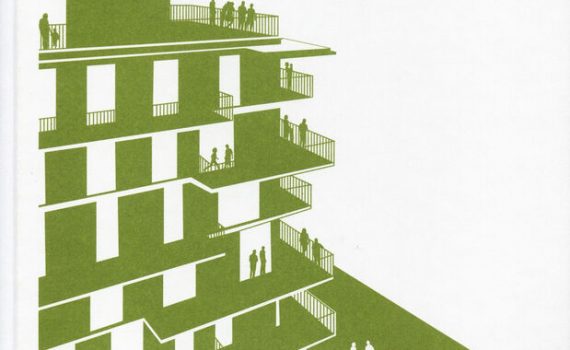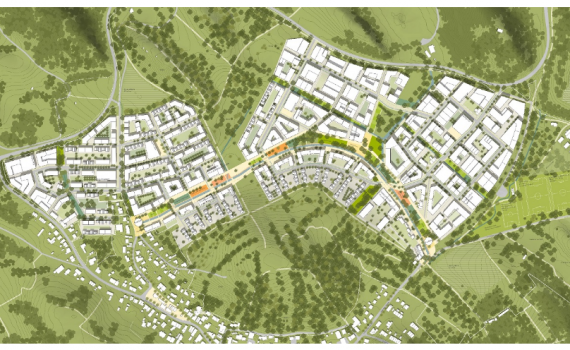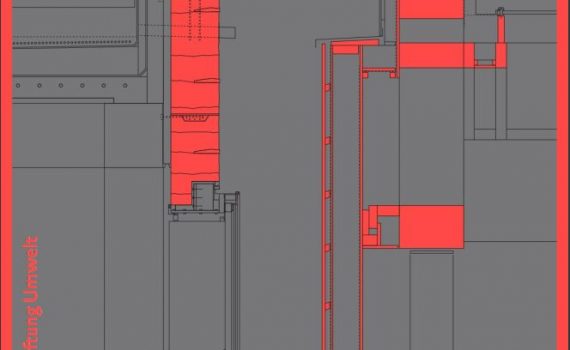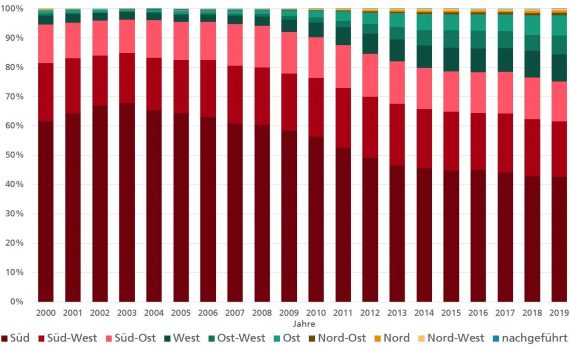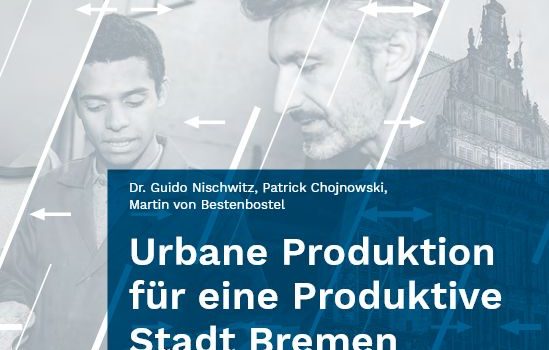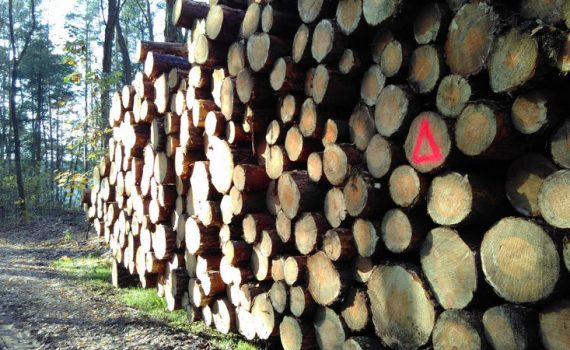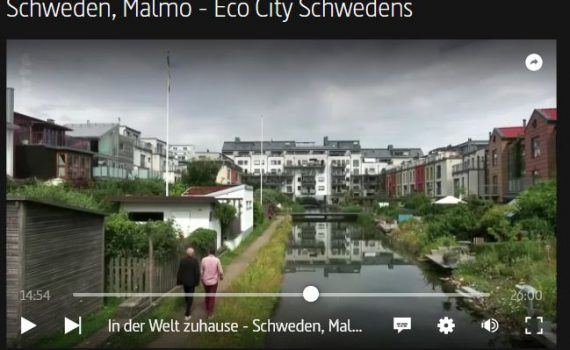 Samstag, 15. Juni 2024
14.00 Uhr Eröffnung
mit Bürgermeisterin Monika Neuhöfer-Avdić
und Singer-Songwriter Auftakt
15.00 Uhr Vernissage
„Zeitzeugen der Lauffenmühle“
15.30 Uhr Vernissage „Lokale Kunstschaffende“
16.30 Uhr Narrenzunft Lörrach
„S‘isch wie‘s isch“
17.30 Uhr Peter Reimtgut
„Das ist Leben“
19.00 Uhr The Kerstin
„slightly distracted“, mit Pheat
Sonntag, 16. Juni 2024
11.00 Uhr Narrenzunft Lörrach
„S‘isch wie‘s isch“
12.00 Uhr Hellbergschule
mit Musik- und Tanz-AG
14.00 Uhr Führung
über das Lauffenmühle-Areal
15.00 Uhr Nachbarschaftstreff
mit Kaffee und Kuchen
15.30 Uhr „ALFA“ Percussion Ensemble
Städtische Musikschule
16.00 Uhr Bands „Greenhorns“ und „Marshmallow
Fighters“, Städtische Musikschule
17.00 Uhr Führung über das Lauffenmühle-Areal
18.00 Uhr Performance „Brunch Boys“
mit Schlagzeug und Effekten
Samstag, 15. Juni 2024
14.00 Uhr Eröffnung
mit Bürgermeisterin Monika Neuhöfer-Avdić
und Singer-Songwriter Auftakt
15.00 Uhr Vernissage
„Zeitzeugen der Lauffenmühle“
15.30 Uhr Vernissage „Lokale Kunstschaffende“
16.30 Uhr Narrenzunft Lörrach
„S‘isch wie‘s isch“
17.30 Uhr Peter Reimtgut
„Das ist Leben“
19.00 Uhr The Kerstin
„slightly distracted“, mit Pheat
Sonntag, 16. Juni 2024
11.00 Uhr Narrenzunft Lörrach
„S‘isch wie‘s isch“
12.00 Uhr Hellbergschule
mit Musik- und Tanz-AG
14.00 Uhr Führung
über das Lauffenmühle-Areal
15.00 Uhr Nachbarschaftstreff
mit Kaffee und Kuchen
15.30 Uhr „ALFA“ Percussion Ensemble
Städtische Musikschule
16.00 Uhr Bands „Greenhorns“ und „Marshmallow
Fighters“, Städtische Musikschule
17.00 Uhr Führung über das Lauffenmühle-Areal
18.00 Uhr Performance „Brunch Boys“
mit Schlagzeug und Effekten
Kategorie für Blog: Typology
Die EU-Staaten haben endgültig grünes Licht für die überarbeitete Richtlinie zur Energieeffizienz von Gebäuden gegeben und die neuen Vorgaben formell beschlossen. Kadri Simson, EU-Kommissarin für Energie, begrüßte das Votum: „Eine bessere Gesamtenergieeffizienz von Gebäuden ist von entscheidender Bedeutung, um unser Ziel der Klimaneutralität zu erreichen und die Energieunabhängigkeit Europas zu stärken. Renovierungen sind Investitionen in eine bessere Zukunft.“
The Federal Cabinet today approved the draft of a timber construction initiative presented by Federal Minister of Construction Klara Geywitz and Federal Minister of Agriculture Cem Özdemir. This strategy of the Federal Government is intended to strengthen the use of wood as a sustainable raw material in the construction sector and to ensure more climate protection, resource efficiency and faster construction. With eight fields of action, from the exemplary role of the federal government and the strengthening of research and innovation, to securing skilled labour and knowledge transfer, to securing the supply of raw materials, the use of wood is to be significantly improved and the timber construction quota increased by 2030.
The housing shortage is an immense social problem in many large cities and conurbations. At the same time, the building sector has been failing to meet its environmental and climate targets for years. In a recent position paper, the Federal Environment Agency (UBA) and the Commission for Sustainable Building at the UBA (KNBau) have examined how more affordable housing can be created without unnecessarily harming the environment and health. According to this paper, the most important factor for more environmental protection in housing construction is that the existing building stock is preserved wherever possible or is sensibly converted and repurposed. This is the easiest way to avoid climate emissions and unnecessarily high consumption of raw materials. Today, UBA President Prof. Dr. Dirk Messner presented KNBau's proposals to Federal Minister of Building Klara Geywitz and Federal Minister of the Environment Steffi Lemke in Berlin.
 The Federal Ministry of Transport, Building and Urban Affairs is supporting the climate-friendly construction of new buildings with a new funding programme that will start on 1 March 2023. For the first time, the entire life cycle of a building will be considered - from construction to operation to potential deconstruction in the distant future. The buildings are characterised by low greenhouse gas emissions in the life cycle, high energy efficiency, low operating costs and a high proportion of renewable energies for the generation of heat and electricity. This funding thus makes a contribution to climate protection and to meeting national climate targets.
The Federal Ministry of Transport, Building and Urban Affairs is supporting the climate-friendly construction of new buildings with a new funding programme that will start on 1 March 2023. For the first time, the entire life cycle of a building will be considered - from construction to operation to potential deconstruction in the distant future. The buildings are characterised by low greenhouse gas emissions in the life cycle, high energy efficiency, low operating costs and a high proportion of renewable energies for the generation of heat and electricity. This funding thus makes a contribution to climate protection and to meeting national climate targets.
Adjusted for inflation, construction volume will decline in 2022 - Price development and rising interest rates will continue to have a severe impact on the construction industry in the years to come - New residential construction will slump more than the overall construction volume - Policymakers will have to change their strategy in order to achieve their goals for the creation of new housing and energy-efficient building renovation in the medium term
The first results of the timber housing study will be presented at the 15th Congress on Efficient Building with Wood in Urban Areas on 19 October 2022 in Cologne. So far, 118 large-volume housing projects with more than 100 units have been identified across Europe by the HFR researchers, 47 of which are located in Germany. Final results will be presented in early December at the 26th International Timber Construction Forum in Innsbruck on 30 November 2022 and will also be published in a brochure by Informationsdienst Holz.
Thüga closed the 2021 financial year with a good result. The approximately 100 municipal utilities and regional suppliers of the Thüga Group fully fulfilled their supply mandate and continued to drive forward the energy turnaround despite burdensome general conditions.
The nominees for the German Building Award 2022 have been determined. A total of 29 housing projects were selected in a two-stage process by an interdisciplinary jury chaired by Susanne Wartzeck, President of the Association of German Architects BDA. This year, 187 housing projects completed between 2018 and 2021 took part in the competition across Germany.
The German Association of Cities, the Global Parliament of Mayors and the international cities network ICLEI have joined forces to form a Cities Alliance to accompany the German G7 Presidency. The alliance is organising a conference on Tuesday, 3 May a U7 Mayors Summitwhich brings together high-ranking representatives of cities from the G7 countries. Representatives of the media are invited to follow the event virtually. The international dialogue will take place under the heading "Engaging the Urban World - Cities as Engines of Change for Peace, Democracy and Sustainability".. It is the most important event of cities in the framework of the German G7 Presidency. A joint declaration by the cities will also be adopted: In the „Urban7 Mayors Declaration“ the city leaders from the G7 countries will present their expectations of politics and business in order to meet the global challenges on the ground.
Recommendations from the BMBF project "Urban Heat Transition" were published: ► Consistently tapping alternative heat sources such as wastewater heat ► Convert public buildings to renewable heat and create neighbourhood heating networks ► Ambitious energy refurbishment in neighbourhood conservation areas to keep rents affordable
 Isabella Marboe (ed.) Bauen für die Gemeinschaft in Wien Neue gemeinschaftliche Formen des Zusammenlebens Edition Detail 2021, 144 pages, de/eng, Euro 39,90
The housing projects presented in Vienna arose from the desire to develop living concepts that strengthen the sense of community and contribute to a society based on solidarity - building groups and participatory projects, neighbourhood houses, temporary or permanent social forms of living and working for marginalised groups such as the homeless and people entitled to asylum. Private flats can be downsized if there is more shared space. These housing and living models are alternatives to capitalist investor thinking. The users get involved, also in the project planning. Ulrike Schartner and Alexander Hagner from gaupenraup+/- explain the starting point and strategies of their work in an introductory interview. In two essays, Robert Temel and Isabella Marboe show the development of communal forms of building and living.
Isabella Marboe (ed.) Bauen für die Gemeinschaft in Wien Neue gemeinschaftliche Formen des Zusammenlebens Edition Detail 2021, 144 pages, de/eng, Euro 39,90
The housing projects presented in Vienna arose from the desire to develop living concepts that strengthen the sense of community and contribute to a society based on solidarity - building groups and participatory projects, neighbourhood houses, temporary or permanent social forms of living and working for marginalised groups such as the homeless and people entitled to asylum. Private flats can be downsized if there is more shared space. These housing and living models are alternatives to capitalist investor thinking. The users get involved, also in the project planning. Ulrike Schartner and Alexander Hagner from gaupenraup+/- explain the starting point and strategies of their work in an introductory interview. In two essays, Robert Temel and Isabella Marboe show the development of communal forms of building and living.
Statement by Klara Geywitz on the 2022 budget and the key figures of the financial planning until 2026 The draft budget for 2022 and the key figures of the financial planning up to 2026 provide for a total of 14.5 billion euros in programme funds for social housing. This will support the construction of 100,000 social housing units per year. That is more than three times the original financial planning, which had earmarked four billion euros by 2025. The 2022 budget will lay the foundation for planning with two billion euros.
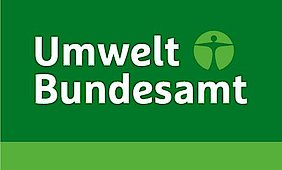 After a significant decline in the previous year, greenhouse gas emissions in Germany are on the rise again. Thus, around 762 million tonnes of greenhouse gases were released in 2021 - a good 33 million tonnes or 4.5 percent more than in 2020. Overall, emissions in Germany have thus fallen by 38.7 percent since 1990. The increase in the last year is particularly noticeable in the energy sector: This shows an increase of 27 million tonnes CO2-equivalents, as increased demand for electricity, lower electricity generation from renewable energies and the higher gas price led to increased use of coal for electricity generation. Electricity generation from renewables fell by seven per cent, mainly due to poor wind conditions. In the transport and building sectors, emissions were above the annual ceilings set by the Federal Climate Protection Act. This is shown by the latest calculations of the Federal Environment Agency (UBA), which are based on the specifications of the Federal Climate Protection Act and the EU-Renewable Energy Directive (RED) were presented today.
After a significant decline in the previous year, greenhouse gas emissions in Germany are on the rise again. Thus, around 762 million tonnes of greenhouse gases were released in 2021 - a good 33 million tonnes or 4.5 percent more than in 2020. Overall, emissions in Germany have thus fallen by 38.7 percent since 1990. The increase in the last year is particularly noticeable in the energy sector: This shows an increase of 27 million tonnes CO2-equivalents, as increased demand for electricity, lower electricity generation from renewable energies and the higher gas price led to increased use of coal for electricity generation. Electricity generation from renewables fell by seven per cent, mainly due to poor wind conditions. In the transport and building sectors, emissions were above the annual ceilings set by the Federal Climate Protection Act. This is shown by the latest calculations of the Federal Environment Agency (UBA), which are based on the specifications of the Federal Climate Protection Act and the EU-Renewable Energy Directive (RED) were presented today.
A regenerative heat supply and an innovative rainwater management system are being designed for the "ecoSquare" neighbourhood in Bamberg. Michael Richter and Wolfgang Dickhaut are in charge of the project.
[caption id="attachment_28516" align="alignleft" width="560"] Award-winning project "Stadt Landschaft Burg" of the Federal Prize 2020 - © Bundespreis Stadtgrün / Hergen Schimpf[/caption]
The Federal Ministry of Housing, Urban Development and Building today announced the Federal Urban Green Award 2022. This year, the focus is on the topic of "Climate adaptation and quality of life".
Federal Minister Klara Geywitz: "Climate change is a stress test for our cities. We need more trees for a better urban climate, we need soils that can absorb heavy rainfall, we need less sealed surfaces for more biodiversity and to prevent residential neighbourhoods from heating up. With the Federal Urban Green Award 2022, we are honouring the pioneering work that is already shaping the necessary transformation of cities."
Award-winning project "Stadt Landschaft Burg" of the Federal Prize 2020 - © Bundespreis Stadtgrün / Hergen Schimpf[/caption]
The Federal Ministry of Housing, Urban Development and Building today announced the Federal Urban Green Award 2022. This year, the focus is on the topic of "Climate adaptation and quality of life".
Federal Minister Klara Geywitz: "Climate change is a stress test for our cities. We need more trees for a better urban climate, we need soils that can absorb heavy rainfall, we need less sealed surfaces for more biodiversity and to prevent residential neighbourhoods from heating up. With the Federal Urban Green Award 2022, we are honouring the pioneering work that is already shaping the necessary transformation of cities."
Housing industry, architects and municipalities called upon to participate
 Berlin - Affordable and high-quality residential construction is currently more important than ever. For more than three decades, outstanding residential construction projects have been honoured every two years with the German Builder-Owner Award. This year's edition of the competition has now been announced.
The aim of the award, which is sponsored by the Federal Ministry of Housing, Urban Development and Building, is to recognise the responsible efforts of developers to create affordable housing and neighbourhoods of "high quality at affordable costs".
Berlin - Affordable and high-quality residential construction is currently more important than ever. For more than three decades, outstanding residential construction projects have been honoured every two years with the German Builder-Owner Award. This year's edition of the competition has now been announced.
The aim of the award, which is sponsored by the Federal Ministry of Housing, Urban Development and Building, is to recognise the responsible efforts of developers to create affordable housing and neighbourhoods of "high quality at affordable costs".
The property developer WvM Immobilien + Projektentwicklung GmbH and the eco-energy supplier NATURSTROM AG found the joint company Green Estate. With the fusion of energy and real estate know-how, the partners are taking a new path to enable people to live sustainably.
 With a very large majority, the municipal council decided on 22.07.2021 to initiate the urban development measure (SEM) "Nördlich Hafner". The development statute provides the project with a binding legal framework for the city of Constance and the remaining property owners in the area. The decision is also the conclusion of the preparatory studies (VU) that have been running for about four years, in which not only various subject-related studies and the urban development framework plan were developed, but also a comprehensive timetable and a detailed cost and financing overview were drawn up. The development of the approx. 106 ha area (of which approx. 60 ha are residential areas) including all technical and social infrastructures (e.g. day-care centres, primary school) will cost a total of almost 420 million euros. Income from the allocation of land will ultimately result in a largely balanced overall balance.
With a very large majority, the municipal council decided on 22.07.2021 to initiate the urban development measure (SEM) "Nördlich Hafner". The development statute provides the project with a binding legal framework for the city of Constance and the remaining property owners in the area. The decision is also the conclusion of the preparatory studies (VU) that have been running for about four years, in which not only various subject-related studies and the urban development framework plan were developed, but also a comprehensive timetable and a detailed cost and financing overview were drawn up. The development of the approx. 106 ha area (of which approx. 60 ha are residential areas) including all technical and social infrastructures (e.g. day-care centres, primary school) will cost a total of almost 420 million euros. Income from the allocation of land will ultimately result in a largely balanced overall balance.
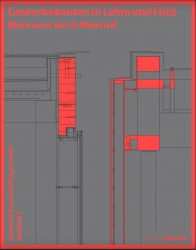 Author of the book review: Roman Schaurhofer, Vienna
The construction volume "Commercial Buildings in Clay and Wood - Added Value through Material" was published in 2020 by Sabine Djahanschah of the Deutsche Bundesstiftung Umwelt (German Federal Foundation for the Environment) at Verlag Detail. The publication, which appeared in book form, deals with the use of the building materials wood and clay in the construction of commercially used buildings. To this end, six buildings with commercial use were analysed in terms of their architectural construction and technical quality features and evaluated with the help of measurements, surveys and life cycle assessments.
Author of the book review: Roman Schaurhofer, Vienna
The construction volume "Commercial Buildings in Clay and Wood - Added Value through Material" was published in 2020 by Sabine Djahanschah of the Deutsche Bundesstiftung Umwelt (German Federal Foundation for the Environment) at Verlag Detail. The publication, which appeared in book form, deals with the use of the building materials wood and clay in the construction of commercially used buildings. To this end, six buildings with commercial use were analysed in terms of their architectural construction and technical quality features and evaluated with the help of measurements, surveys and life cycle assessments.
 The new National Progress Report on the Implementation of the New Urban Agenda shows the state of sustainability in urban development in German municipalities. The report was prepared by the German Institute of Urban Affairs on behalf of the Federal Institute for Research on Building, Urban Affairs and Spatial Development (BBSR).
The new National Progress Report on the Implementation of the New Urban Agenda shows the state of sustainability in urban development in German municipalities. The report was prepared by the German Institute of Urban Affairs on behalf of the Federal Institute for Research on Building, Urban Affairs and Spatial Development (BBSR).
 To live up to its climate change pledge under the Paris Agreement, the European Union must ensure that all 250 million existing buildings, as well as all new buildings in the EU, produce near-zero greenhouse gas emissions. In a new report, European national academies of science, through their association EASAC, call for far-reaching policy action. "Policies have long focused on creating energy-efficient buildings that require less heating and air conditioning or generate renewable energy on site. However, the energy used to operate buildings is only part of the story. We need to broaden the scope and look at emissions from building materials and methods - both for new buildings and for building refurbishment," says William Gillett, Director of EASAC's Energy Programme.
To live up to its climate change pledge under the Paris Agreement, the European Union must ensure that all 250 million existing buildings, as well as all new buildings in the EU, produce near-zero greenhouse gas emissions. In a new report, European national academies of science, through their association EASAC, call for far-reaching policy action. "Policies have long focused on creating energy-efficient buildings that require less heating and air conditioning or generate renewable energy on site. However, the energy used to operate buildings is only part of the story. We need to broaden the scope and look at emissions from building materials and methods - both for new buildings and for building refurbishment," says William Gillett, Director of EASAC's Energy Programme.
 In a recently written short study, scientists from the Department of Energy System Analysis at the Fraunhofer Institute for Solar Energy Systems ISE prepared an evaluation of the Market Master Data Register (MaStR) and the EEG system master data for photovoltaics (PV). Important findings of the analyses were that with 38 percent of the newly installed capacity, the increase in capacity in Germany is increasingly taking place in the segment of rooftop systems larger than 100 kW, 22 percent of the newly built PV systems are erected in a west, east or east-west direction and 19 percent of these systems have tilt angles smaller than 20 degrees.
In a recently written short study, scientists from the Department of Energy System Analysis at the Fraunhofer Institute for Solar Energy Systems ISE prepared an evaluation of the Market Master Data Register (MaStR) and the EEG system master data for photovoltaics (PV). Important findings of the analyses were that with 38 percent of the newly installed capacity, the increase in capacity in Germany is increasingly taking place in the segment of rooftop systems larger than 100 kW, 22 percent of the newly built PV systems are erected in a west, east or east-west direction and 19 percent of these systems have tilt angles smaller than 20 degrees.
Exploit potential at neighbourhood level!
The KfW programme "Energy-efficient urban refurbishment" promotes integrated energy-efficient neighbourhood concepts and refurbishment management with programme part 432. Programme parts 201 and 202 provide investment support for cross-building and infrastructural supply systems. The Federal Ministry of the Interior, for Building and the Home Affairs provides the funding for the energy refurbishment process from the individual building to the neighbourhood from the Energy and Climate Fund (EKF).The Special price on the topic "Urban development revisited: Prices - Practice - Perspectives" was given to the project Urban development area Stuttgarter Straße, French Quarter in Tübingen. The special prize, which is awarded in parallel to the urban development prize, serves to highlight particularly urgent fields of action in urban development and urban planning. It was awarded on 23.4.2021 on the occasion of the 40th anniversary of the German Urban Development Prize to contributions that had already been recognised with prizes and awards between 1980 and 2010. The judging of the special prize was very complex, as it had to cover a span of 30 years, i.e. a generation, of the achievements of German urban development that were considered outstanding at the time, and, in retrospect, it had to be based on robust, objective criteria that could adequately reflect the complexity of 30 years of urban development history and 30 years of urban development models.
 The prize is awarded every two years by the German Academy for Urban Development and Regional Planning (DASL) with significant support from the Wüstenrot Foundation. Urban Development Award in the DSP 2020 competition goes to the project Quarter at the former Blumengroßmark in Berlin. With 81 applications, a particularly large number of projects were submitted for the Urban Design Award. The spectrum was very broad: urban-structural-geographical, thematic, structural-spatial. From the new town hall in the urban planning context of a small municipality to the large conversion project of a metropolitan region, the interdisciplinary jury (urban planning, architecture, open space planning, preservation of historical monuments, economics, sociology) was faced with a very difficult decision in many cases.
The prize is awarded every two years by the German Academy for Urban Development and Regional Planning (DASL) with significant support from the Wüstenrot Foundation. Urban Development Award in the DSP 2020 competition goes to the project Quarter at the former Blumengroßmark in Berlin. With 81 applications, a particularly large number of projects were submitted for the Urban Design Award. The spectrum was very broad: urban-structural-geographical, thematic, structural-spatial. From the new town hall in the urban planning context of a small municipality to the large conversion project of a metropolitan region, the interdisciplinary jury (urban planning, architecture, open space planning, preservation of historical monuments, economics, sociology) was faced with a very difficult decision in many cases.
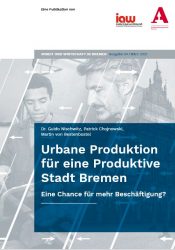 In a research project of the iaw, the conceptual foundations of urban production and the productive city were prepared with a view to the situation in Bremen and analysed in their impact structure. The study makes proposals for describing and recording urban production that is compatible with the city and embedding it in an urban development policy model of a productive city. On the basis of seven reference cities (Vienna, Zurich, Stuttgart, Hamburg, Frankfurt am Main, Wuppertal, Bochum), corresponding activities were filtered out and their transferability to the city of Bremen was examined. In the city of Bremen, eight locations and neighbourhoods (including the Tabakquartier and Kellogg-Areal) were examined with regard to their potential for implementing a productive city.
In a research project of the iaw, the conceptual foundations of urban production and the productive city were prepared with a view to the situation in Bremen and analysed in their impact structure. The study makes proposals for describing and recording urban production that is compatible with the city and embedding it in an urban development policy model of a productive city. On the basis of seven reference cities (Vienna, Zurich, Stuttgart, Hamburg, Frankfurt am Main, Wuppertal, Bochum), corresponding activities were filtered out and their transferability to the city of Bremen was examined. In the city of Bremen, eight locations and neighbourhoods (including the Tabakquartier and Kellogg-Areal) were examined with regard to their potential for implementing a productive city.
"Municipalities are crucial drivers for the sustainable development of our society," explains Dr. Werner Schnappauf, Chairman of the German Council for Sustainable Development (RNE). "All 17 sustainability goals are directly or indirectly related to the tasks of a municipality. The new reporting framework sustainable municipality, the BNK, can be a great help for further progress in the field of sustainability", says Schnappauf.
 A most welcome piece of news reached the city of Aachen this morning (17 March 2021): Federal Minister Horst Seehofer has announced this year's selection of the "National Projects of Urban Development" and announced that the development of the Büchel old town quarter will receive up to 5.5 million euros in funding. Aachen is thus one of four municipalities in NRW to have been awarded the contract. With the amount of funding, the city is in third place nationwide.
A most welcome piece of news reached the city of Aachen this morning (17 March 2021): Federal Minister Horst Seehofer has announced this year's selection of the "National Projects of Urban Development" and announced that the development of the Büchel old town quarter will receive up to 5.5 million euros in funding. Aachen is thus one of four municipalities in NRW to have been awarded the contract. With the amount of funding, the city is in third place nationwide.
 "The raw material wood is precious. It is therefore important to use it responsibly and in a way that conserves resources," warns Peter Aicher, Chairman of Holzbau Deutschland. Even if wood is affected by environmental influences or the bark beetle, it does not represent an inferior raw material, but has almost identical properties to conventional construction timber. "If the so-called 'calamity wood' has the same structural quality in terms of load-bearing capacity as conventional sawn timber, it can be used without restrictions," explains Aicher. In addition, the wood retains its important function as a CO2 sink, regardless of external impairments.
"The raw material wood is precious. It is therefore important to use it responsibly and in a way that conserves resources," warns Peter Aicher, Chairman of Holzbau Deutschland. Even if wood is affected by environmental influences or the bark beetle, it does not represent an inferior raw material, but has almost identical properties to conventional construction timber. "If the so-called 'calamity wood' has the same structural quality in terms of load-bearing capacity as conventional sawn timber, it can be used without restrictions," explains Aicher. In addition, the wood retains its important function as a CO2 sink, regardless of external impairments.
Animation from Jan Kamensky (2020)
 "New large-scale construction projects and ecological innovations have ensured that Malmö is now a prime example of the direct transition from an industrial metropolis to a sustainable eco city. The secret recipe: the city not only relied on innovative technologies, but above all on the active participation of citizens in the transformation."
"New large-scale construction projects and ecological innovations have ensured that Malmö is now a prime example of the direct transition from an industrial metropolis to a sustainable eco city. The secret recipe: the city not only relied on innovative technologies, but above all on the active participation of citizens in the transformation."
On 22.12.2020, the Senate passed the first legal ordinance on the Hamburg Climate Protection Act. This regulates the concrete implementation of the solar roof obligation and the integration of renewable energies when replacing heating systems. With these regulations, Hamburg is one of the pioneers in climate protection in the building sector nationwide.
A new study from Denmark takes a look at the costs of sustainable building construction and shows that more sustainable does not automatically mean more expensive. On the contrary. The study by Buus Consult on behalf of the DGNB system partner from Denmark, the Green Building Council Denmark, now provides clarity. In the study, it takes a close look at 37 DGNB-certified buildings.
 Forestry Minister Peter Hauk MdL: "With our call for ideas, we want to further promote municipal timber construction in the state and further consolidate our nationwide position as the No. 1 timber construction state".
A total of around 6.5 million euros in funding from the Baden-Württemberg timber construction campaign is available for the call for ideas for municipal timber construction concepts. The online application deadline is 12 February 2020.
Forestry Minister Peter Hauk MdL: "With our call for ideas, we want to further promote municipal timber construction in the state and further consolidate our nationwide position as the No. 1 timber construction state".
A total of around 6.5 million euros in funding from the Baden-Württemberg timber construction campaign is available for the call for ideas for municipal timber construction concepts. The online application deadline is 12 February 2020.




